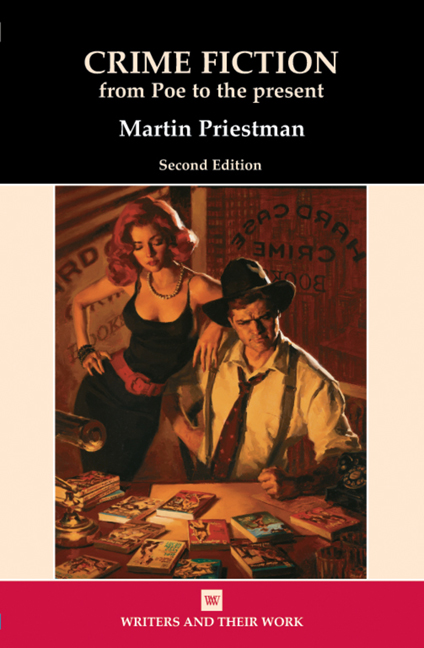Book contents
- Frontmatter
- Contents
- Acknowledgements
- A Chronology
- Introduction
- 1 The Detective Whodunnit from Poe to the First World War
- 2 The Detective Whodunnit from Christie to the Present
- 3 The Noir Thriller
- 4 The Hero-Thriller
- 5 Private Eyes: The Detective Thriller
- 6 Serial-killer Fiction and Other Developments
- Conclusion
- Notes
- Select Bibliography
- Index
Introduction
- Frontmatter
- Contents
- Acknowledgements
- A Chronology
- Introduction
- 1 The Detective Whodunnit from Poe to the First World War
- 2 The Detective Whodunnit from Christie to the Present
- 3 The Noir Thriller
- 4 The Hero-Thriller
- 5 Private Eyes: The Detective Thriller
- 6 Serial-killer Fiction and Other Developments
- Conclusion
- Notes
- Select Bibliography
- Index
Summary
A large part of the world's fiction concerns crime of some kind, so this brief study makes no claim to be comprehensive. Fortunately, as a self-conscious genre, the detection-based ‘whodunnit’ firmly separated itself off once and for all from the rest of literature in 1841 with Edgar Allan Poe's ‘The Murders in the Rue Morgue’. From then to now, the basic formula of this single short story has been endlessly reworked in a literary genre of astonishing stability, coherence and continuing popularity.
Poe's tradition has, however, run alongside and often intertwined with other ways of writing about crime, which are less easily pinned down to a single point of origin. In these forms, while detection might be one source of interest, it either accompanies or is replaced by others designed to involve us in a present action rather than just the resolving of a past mystery. In an essay to be discussed further in Chapter 1, Tsvetan Todorov firmly contrasts such ‘thrillers’ with the detective whodunnit in ways which I shall loosely follow in the categories adopted in this book.
Within this categorization, the whodunnit is primarily concerned with unravelling past events which either involve a crime or seem to do so. The present action is largely static, and major attention is given to the detecting activity itself, which may be performed by virtually anyone – police or amateur – who enjoys the final approval of the law.
In the thriller, the action is primarily in the present tense of the narrative. In one branch, which I call the noir thriller, we identify with characters who consciously exceed the law, whether in their whole lifestyles or through specific actions. In another, which I call the hero-thriller, the protagonists confront a powerful villain or conspiracy of wrongdoers without the guaranteed support of the forces of law and order. This group includes most spy fiction as well as much adventure fiction in which heroes match their powers against villains.
Between the detective whodunnit and the thriller, there is a hybrid form which can be most clearly described as the ‘detective thriller’. This divides our interest between solving a past mystery and following a present action in which the protagonists may confront dangerous characters alone, or step outside the law, or both.
- Type
- Chapter
- Information
- Crime Fictionfrom Poe to the present, pp. 1 - 5Publisher: Liverpool University PressPrint publication year: 2013

